5 states with surprisingly high earthquake risks
 Each year, the United States experiences about 20,000 earthquakes, according to the U.S. Geological Survey (USGS).
Each year, the United States experiences about 20,000 earthquakes, according to the U.S. Geological Survey (USGS).
These can range from minor tremors to more significant quakes, like the one that hit Napa, Calif. in August 2014.
The USGS recently released its list of the 16 states with the highest earthquake risk. To no one’s surprise, the usual suspects made the list, including Alaska, California and Washington.
But look a little closer, and you will find some surprising names in the top tier for temblors. Is your state among them?
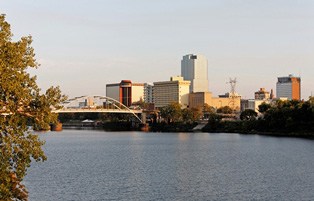 1. Arkansas
1. Arkansas
The Razorback State sits quietly in the nation’s midsection. Few would think of such a location as earthquake country.
But Arkansas sits in the New Madrid seismic zone, which runs through five states and has been a source of some of the most significant earthquakes in U.S. history.
Arkansas has experienced several quakes that originated inside the state, including a 1911 temblor that sent hundreds of Pine Bluff, Ark., residents into the streets in a panic.
Earthquake tip: Assess your risk
Earthquakes have occurred in 39 states, and every one of the 50 states has experienced damage associated with these events, says the Insurance Information Institute (III).
Assess your region’s earthquake risk by looking at the latest maps provided by the U.S. Geological Survey.
“The most recent update shows the risk of earthquake activity has increased for one-third of the country,” says Tiffany O’Shea, spokeswoman for the Insurance Institute for Business and Home Safety (IBHS).
The 2014 maps are an update on the previous most recent maps, issued in 2008.
Officials have raised the risk level in those areas because thanks to improved instruments and data analysis, they better understand the potential for shaking there.
Also, if you have a brick home or a wood-frame home with a crawl space, your home may be more vulnerable to earthquake damage than others, according to the National Association of Insurance Commissioners (NAIC).
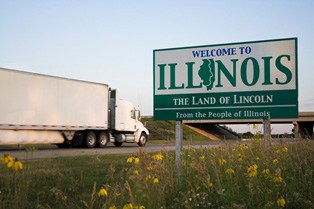 2. Illinois
2. Illinois
Another state in the New Madrid seismic zone, Illinois has originated its share of temblors, including two big ones.
One of the state’s largest earthquakes struck on May 26, 1909. It toppled chimneys in Aurora, Ill., caused buildings to sway in Chicago, and was felt as far as 500,000 square miles away.
An even bigger earthquake struck near the town of Dale on Nov. 9, 1968. It was felt up to 580,000 square miles away, and people in tall buildings in Massachusetts and Ontario, Canada, felt the event.
Earthquake tip: Make sure you have the right insurance
A standard homeowners policy doesn’t cover earthquake damage. Coverage generally can be purchased as an endorsement to your homeowners policy, or as a stand-alone policy.
Earthquake insurance is likely to be more expensive in states that have a history of frequent events. For example, according to the California Department of Insurance, the average earthquake premium in California is about $750 a year.
“In most other states, it’ll be significantly less per year — perhaps in the $150 to $200 range,” says Michael Barry, III spokesman.
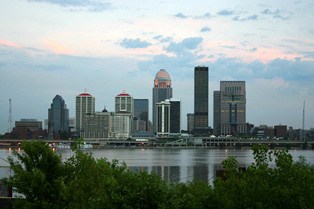 3. Kentucky
3. Kentucky
The western part of the Bluegrass State lies closest to the New Madrid zone, making it especially vulnerable to earthquakes.
In fact, Louisville resident Jared Brooks recorded more than 1,800 tremors in a period of less than six months after a severe earthquake struck the region in December 1811, according to the USGS.
Earthquake tip: Know what is — and isn’t — covered
Don’t assume earthquake insurance will cover all damage you experience after an earthquake.
For example, if your car is damaged — even if it’s parked in a garage that collapsed because of an earthquake — it won’t be covered by earthquake insurance. You would need a comprehensive car insurance policy to cover that damage.
Earthquake insurance also won’t cover water damage from flooding, or sewer or drain backup.
Many policies also have a 72-hour rule in which all damage — whether caused by an initial earthquake or its aftershocks — is considered to be part of one event.
After 72 hours, any subsequent damage triggered by new aftershocks may be considered part of a second claim, with a second deductible.
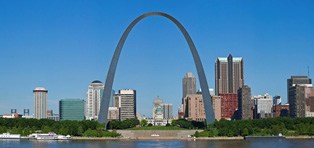 4. Missouri
4. Missouri
Three of the most severe earthquakes in the nation’s history occurred in the Show-Me State in 1811 and 1812 and were centered near New Madrid, Mo.
Damage from these earthquakes extended out more than 230,000 square miles, according to the USGS.
These quakes were so significant that they uplifted large areas of land permanently, and temporarily caused the Mississippi River to appear as if it was flowing upstream.
Earthquake tip: Understand your deductible
It’s increasingly common for insurance companies to sell earthquake policies that have a “percentage deductible” rather than a set dollar amount (typically $500 or $1,000.)
Such deductibles tend to range between 2 percent and 20 percent of a home’s replacement value, III says. So, a homeowner with a 2 percent earthquake deductible whose dwelling would cost $200,000 to replace is on the hook for the first $4,000 of a claim.
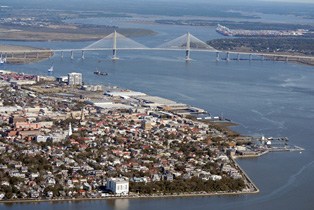 5. South Carolina
5. South Carolina
Charleston, S.C., has been the source of some of the greatest earthquakes east of the Mississippi. An earthquake in 1886 killed around 60 people and destroyed many buildings.
Nearly two dozen other significant temblors have been centered near Charleston.
Insurance tip: Prevent damage before it occurs
Yes, earthquake insurance is there to pick up the pieces if you suffer damage. But preventing damage from occurring in the first place is a much better option.
If you file a claim, you will be responsible for paying the deductible. In addition, you’ll have the headache of replacing damaged items and hiring contractors to repair damage to your home.
Carole Walker, executive director for the Rocky Mountain Insurance Information Association, suggests bolting down heavy furniture, such as bookcases, dressers and appliances. Also, secure flat-screen TVs and pictures to the wall. According to the IBHS, implementing these precautions may cost less than $70.
“These steps will not only help prevent damage, but also injury,” she says.
